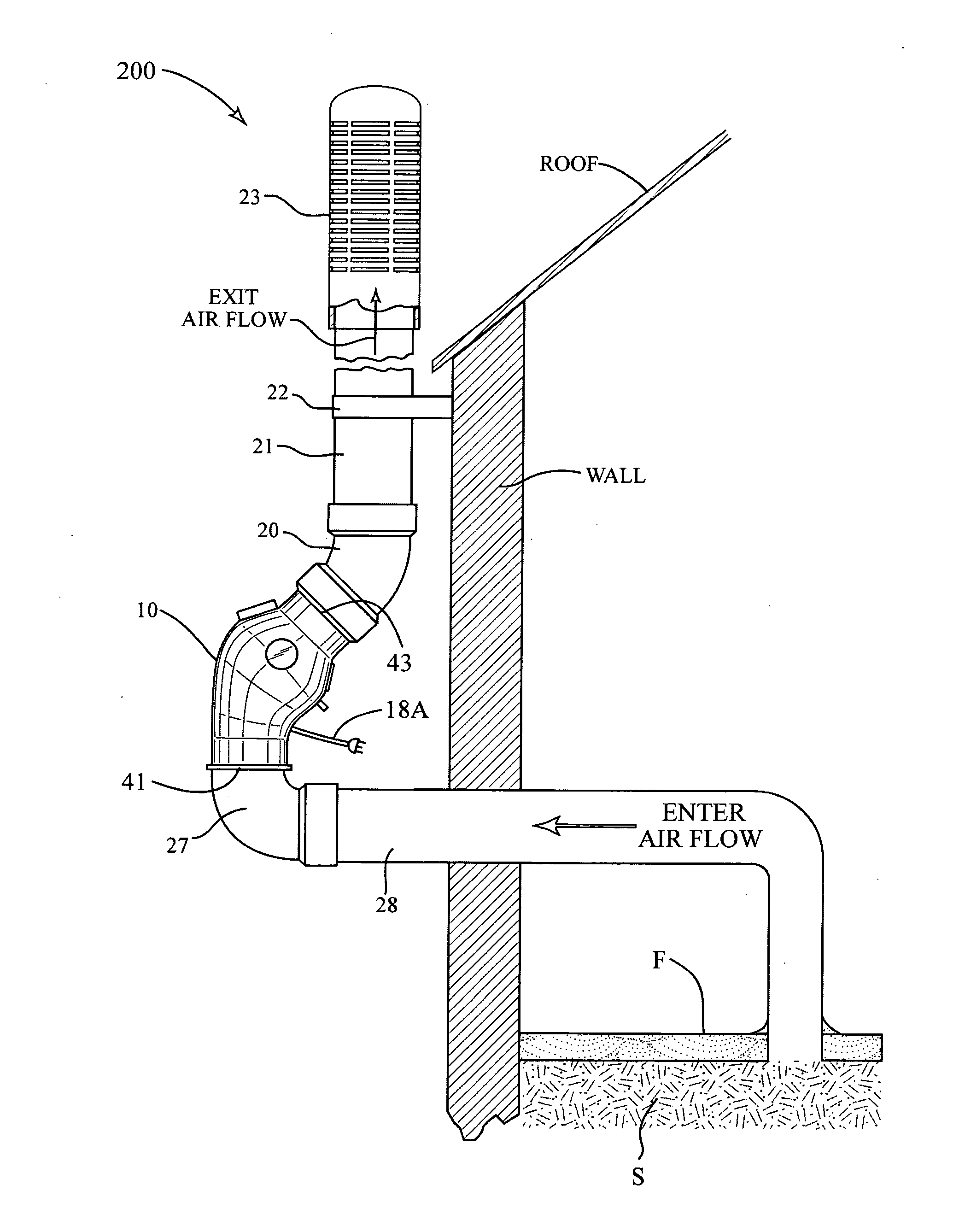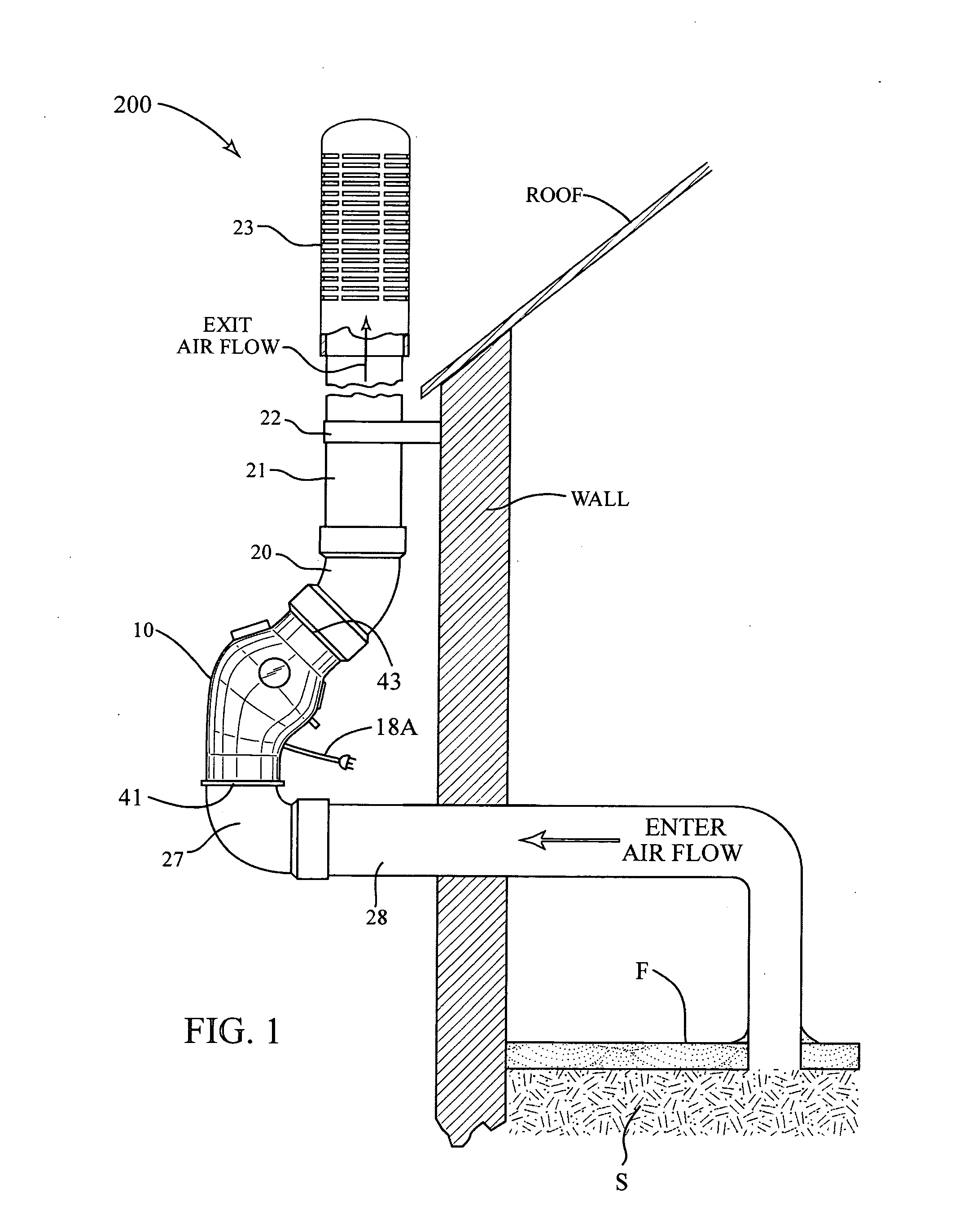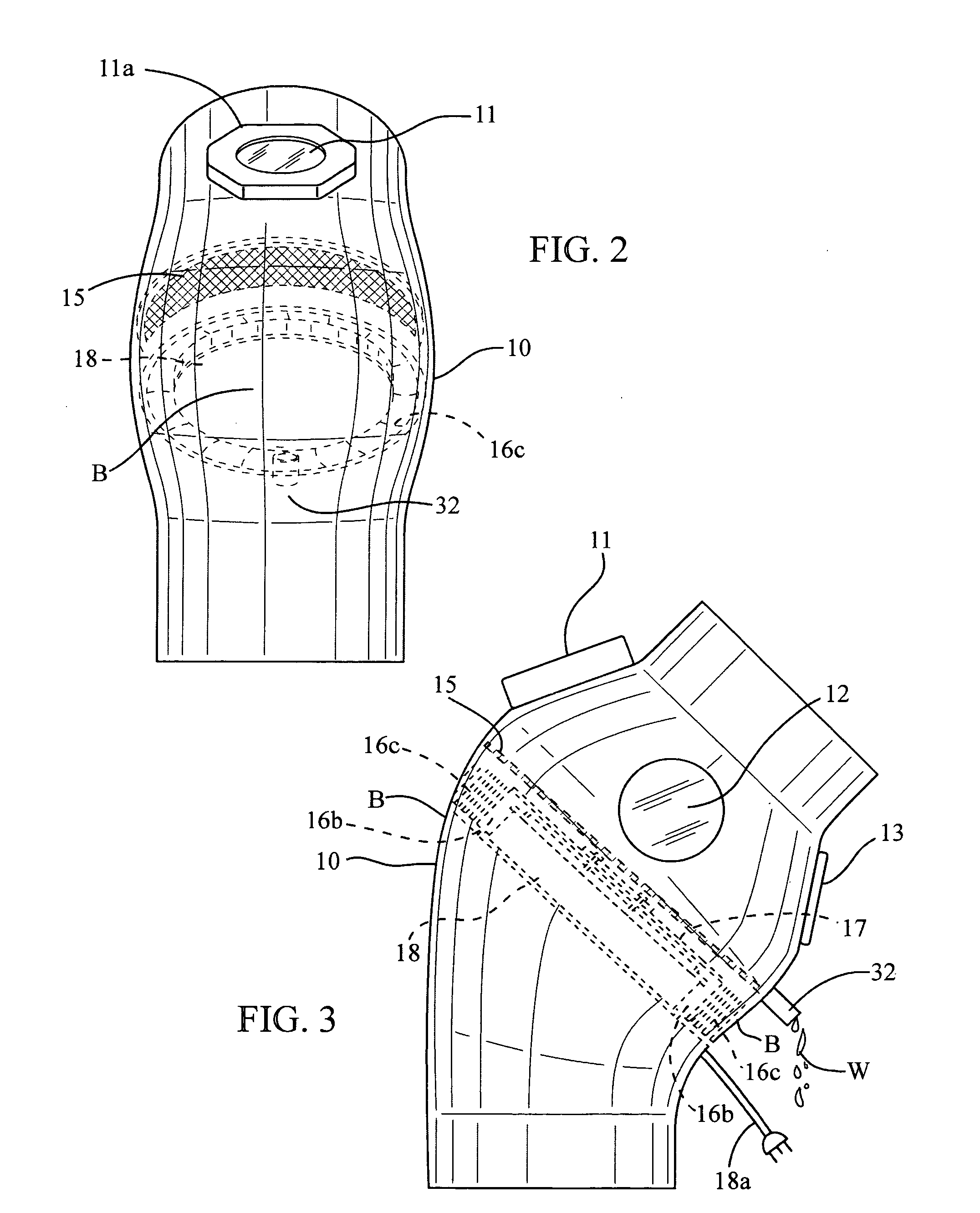Radon exhaust system with internial gaseous fluid fan within diagnostic bypass filter fan apparatus
- Summary
- Abstract
- Description
- Claims
- Application Information
AI Technical Summary
Benefits of technology
Problems solved by technology
Method used
Image
Examples
Embodiment Construction
[0099]FIG. 1 shows side view of a gaseous fluid (radon) mitigation system 200, with a hollow continuous air movement piping system originating from sub-soil “S” below a building concrete floor slab “F” to terminate above a roof edge of a building.
[0100]A diagnostic bypass filter fan housing 10, of said improved gaseous fluid (radon) mitigation system 200 draws warm, moist radon laced air from under said building concrete floor slab “F” and pumps same warm, moist radon laced air through said diagnostic bypass filter fan housing 10, to be expelled through a vent housing 23, into the atmosphere.
[0101]Embodiments shown within said diagnostic bypass filter fan housing 10, including a circular suction port 41, a circular exhaust port 43 and a fan power cord 18A.
[0102]Components shown below said diagnostic bypass filter fan housing 10, is suction side, pipe 28, and suction side, elbow 27, which comprises the suction side of said gaseous fluid (radon) mitigation system 200.
[0103]Components ...
PUM
 Login to View More
Login to View More Abstract
Description
Claims
Application Information
 Login to View More
Login to View More - R&D
- Intellectual Property
- Life Sciences
- Materials
- Tech Scout
- Unparalleled Data Quality
- Higher Quality Content
- 60% Fewer Hallucinations
Browse by: Latest US Patents, China's latest patents, Technical Efficacy Thesaurus, Application Domain, Technology Topic, Popular Technical Reports.
© 2025 PatSnap. All rights reserved.Legal|Privacy policy|Modern Slavery Act Transparency Statement|Sitemap|About US| Contact US: help@patsnap.com



